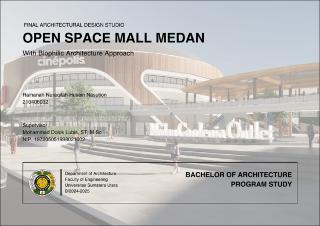| dc.description.abstract | Increased urbanization in Medan has created a high demand for commercial space, particularly in the central business district. This research explores the design of an open-space mall using biophilic architecture, which integrates nature into the urban environment. The aim is to incorporate natural elements like green spaces, water features, and natural lighting to create a sustainable and aesthetic setting. It also examines how biophilic design enhances user experience, reduces stress, and promotes social interaction. Its strategic location is in a bustling area in Medan, offering easy access. Using qualitative and quantitative methods, the study analyzes site survey, documentation, literature study, comparative study, analysis of space requirements, circulation, spatial layout, space capacity, and space size. Findings show that biophilic elements can attract visitors while supporting sustainability and residents' well-being. | en_US |


